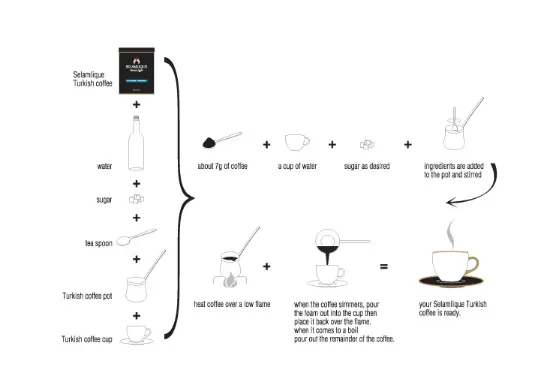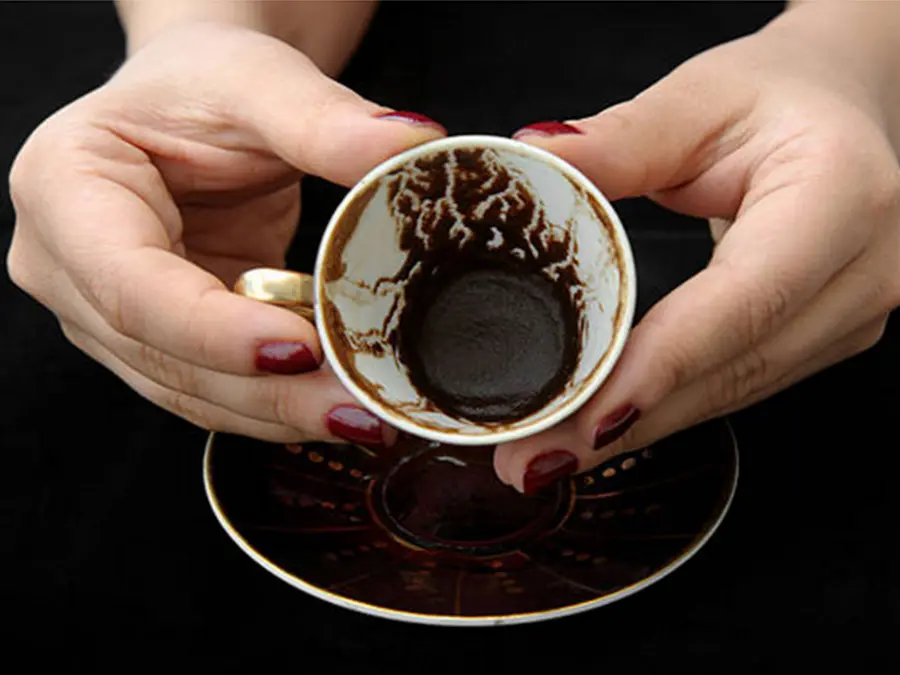Many generations of people have enjoyed Turkish coffee as a part of their culture. It has a lot of history, tradition, and even a little magic to it. The art of fortune-telling is an interesting aftertaste of this centuries-old practice that is an important part of Turkish coffee culture, where the process of brewing is just as important as the coffee itself.
Turkey Coffee’s History and Meaning
Coffee from Turkey has an extended and memorable history that dates back to the Ottoman Empire. The 16th century marked the beginning of its widespread presence in significant social and cultural events. Symbolizing hospitality, respect, and friendship, the preparation and consumption of Turkish coffee quickly became a ceremonial rite. Because of this long standing custom, Turkish coffee culture is an important aspect of the country’s history.
Turkish coffee is distinct from other coffee varieties due to its special processing procedure. Unlike drip or espresso, we prepare Turkish coffee by finely powdered coffee beans and mixing them with water and sugar (if preferred) in a specialized pot known as a cezve. The frothing process begins with a gradual heating of the liquid at low heat, usually over hot sand or an open flame. We pour the coffee, grounds, and all, into small cups without first filtering it. The end product is a full-bodied, exceptionally delicious brew that is thick and creamy.
How to Make Traditional Turkish Coffee
Considered an art form, brewing Turkish coffee requires expertise, patience, and accuracy. The procedure begins with selecting premium or just ground coffee beans. Typically, people prize Arabica beans for their low acidity and great taste. Usually one teaspoon of coffee per cup, the coffee is then mixed with cold water in the cezve along with sugar to taste. To guarantee equal distribution of the coffee grounds, completely combine the ingredients before heating.
The low heat from the cezve allows the coffee to gradually heat up. As it warms, foam starts to surface. Turkish coffee depends on this froth; hence, considerable care is required to preserve it. We temporarily remove the coffee from the heat to allow the foam to settle, and then bring it back to a boil once it begins to froth. We sometimes repeat this process multiple times to create a rich, creamy foam, which we then spoon into each cup before pouring the coffee. The end effect is a visually pleasing, fragrant, powerful cup of coffee.
Experience The Turkish Coffee Culture
Coffee is more than just a drink in Turkish society; it’s a moment to enjoy. Most of the time, Turkish coffee is drunk slowly, with a glass of water to clean the tongue and a sweet treat like lokum (Turkish pleasure). The small cups, about the size of a demitasse, make it easy to sip, allowing the rich taste to stay on the tongue. People usually drink coffee with other people, which makes it a social practice that helps individuals talk to each other and make connections.
Turkey does not filter its coffee, resulting in a thick layer of grounds at the bottom of the cup. The next part of the experience, fortune-telling, heavily relies on the coffee grounds.
How to Tell the Future with Turkish Coffee
One of the most attractive things about Turkish coffee culture is tasseography, which means understanding people’s futures with coffee grounds. After drinking the coffee, they turn the cup upside down on the saucer and leave it to cool. As the grounds settle and dry, they make patterns inside the cup. A fortune-teller, or someone with a lot of experience, then figures out what those patterns mean.
Over time, people have passed down the skill of reading coffee grounds. People think that the patterns show different shapes and symbols that can tell them about their future. A straight line, for instance, could mean a trip, while a heart shape could mean love or care. The reader must rely on their instincts and past experiences to interpret these images.
Reading coffee grounds is an important part of Turkish coffee culture, even though many people think of it as a fun and silly thing to do. It makes drinking coffee more mysterious and interesting, combining the physical pleasure of the brew with a touch of magic.

Keeping an Old Tradition Alive
The Turkish coffee culture is a live practice that is still going strong today. Turkey and the world continue to love and respect Turkish coffee, despite the emergence of numerous new coffee styles and methods. It’s a unique cultural gem because of its long past, careful planning, and the added element of fortune-telling.
Turkish coffee makes us slow down, enjoy the present, and maybe even see into the future in a world where people usually drink coffee on the go. It’s not only about the coffee; it’s also about the experience, the link, and carrying on a long-standing custom.
Conclusion: Mastering the Art of Traditional Turkish Coffee Culture
In conclusion, Turkish coffee is more than just a drink. It is a deeply rooted cultural custom that combines the precise art of boiling with the mysterious art of fortune-telling. Turkish coffee has been a sign of kindness, social link, and shared experience since the Ottoman Empire and is still important today. This one-of-a-kind custom allows us to enjoy not only the deep, full-bodied taste of coffee but also the traditions and meanings that go along with it. This keeps alive a cultural history that goes beyond the cup.

